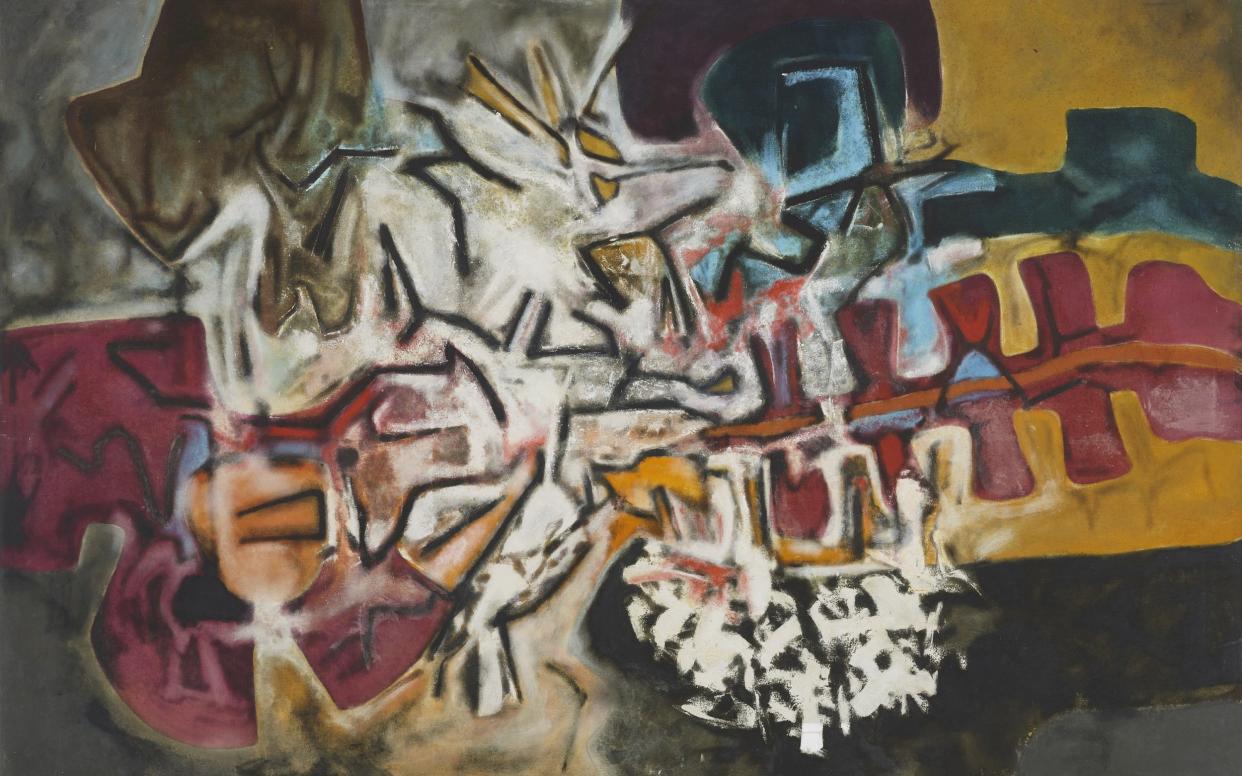Life Between Islands: Caribbean-British Art, Tate Britain review: as tender and joyful as it is angry and defiant

- Oops!Something went wrong.Please try again later.
- Oops!Something went wrong.Please try again later.
Make no mistake: Life Between Islands, Tate Britain’s ambitious new survey of Caribbean-British art from the 1950s to today, is a serious, complex, and difficult show, full of uncomfortable imagery. An inferno blazes before tower blocks: are we in Tottenham – or Tikrit? In the back of a police van, officers surround a lifeless, prone black man. Nearby, mutilated Union Jacks are rearranged to form swastikas.
At times, then, the dominant mood is one of anger and defiance. Here are four demure schoolgirls, photographed in 1970, heading off to their lessons brandishing bags emblazoned with Black Panther symbols: a clenched fist, a gun. This is social, as much as art, history. The story of what happened to the so-called Windrush generation and their descendants is still raw.
But there are other motifs and colours, too – a joy and tenderness which are, perhaps, less familiar to an audience weaned decades ago on footage broadcast on the nightly news. A sassy model in lilac flares poses for a fashion shoot in Brixton market. An older, wearier woman rests, her face carefully modelled in paste and gently illuminated by a soft smile. A mother wearing green grins while playing with a toddler upon a beach.
Michael McMillan’s recreation of an archetypal “West Indian” front room from the Seventies is inhabited, in his conceit, by a fictional singleton called Joyce. Patterned yellow wallpaper, doilies on the backs of sofas, a floral carpet that swirls with burning, hallucinatory intensity: the time-capsule effect, finished with a Woolworths shopping bag beneath a rotary-dial telephone on an orange stand, is meticulous. This is a stage set for a human drama of laughter and romance.
Conceived and co-curated by Alex Farquharson, who pitched the idea during his interview to become Tate Britain’s director, the show contains 46 artists, across four generations. The oldest, born in 1900, is Ronald Moody, a kind of John the Baptist for black British art whose imposing, sentinel-like elm figure from 1936, “Johanaan”, named after that itinerant prophet, is the first thing we see. The youngest, Njideka Akunyili Crosby, is still in her thirties.

Farquharson’s premise is simple: while the contribution to post-war British culture of Caribbean literature and music is widely acknowledged, that of visual artists associated with the region is not. Time, then, for a celebratory knees-up and one of the show’s big themes is carnival: Chris Ofili and Lisa Brice, for instance, both paint ultramarine or indigo figures alluding to “Blue Devils”, traditional characters in Trinidadian festivals.
Although I had various gripes (e.g., in the opening sections, the curators struggle to make a convincing case that the art of those who first took advantage of the 1948 British National Act to “return to the mother country” had a “tropical” or “Caribbean” aesthetic), I should say, in fairness, that having expected the labelling to be a non-stop diatribe against the depredations of empire, for the most part, it is sensitive, level-headed, and rhetoric-free.
Several artworks, such as Donald Locke’s “Trophies of Empire” (1972-74), a set of shelves displaying cylindrical black ceramic objects like castrated phalluses, are explicitly damning about Britain’s colonial past. Others are more ambiguous, such as a row of porcelain busts of British sovereigns, festooned by Locke’s son, Hew, with “souvenirs” of empire (coins, medals), as well as plastic beads, so that they resemble treasures from the ocean’s depths. This intergenerational back-and-forth is another important topic of the exhibition, which is organised chronologically.
Having begun with John the Baptist, the show ends with “Exodus” (1992-97), a short but resonant film by Steve McQueen, in which the artist’s Super 8 camera follows a pair of black men in trilbies as they weave through London’s streets, each holding a swaying potted plant. Nobody pays them any attention. And yet those palms mark them out as different, enriching the drab urban fabric through which they pass.
From Dec 1 until April 3; information: 020 7887 8888, tate.org.uk

